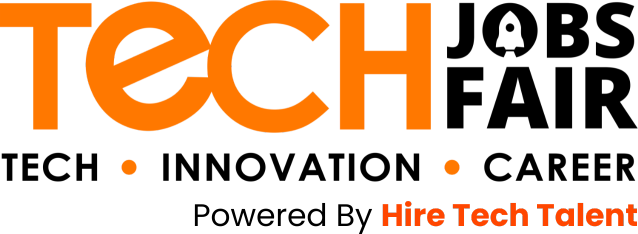- « Previous blog
-
July 9, 2021
-
1976
- Next blog »
Hackers have the ability to reveal your personal information and potentially stop your business activities for a few hours or days. The increasing complexity of these attacks has prompted a number of corporations to crack down on cybercriminals, and this back-and-forth struggle defines the current developments in cybersecurity.
As cyber technology advances day by day, hackers and cybercriminals are becoming increasingly sophisticated. New technologies mean new ways for hackers to infiltrate the digital information network of an organization. This means that cybercriminals are always coming up with new attacks and new ways to breach security systems. On the other hand, experts have been developing new solutions to combat cybercrime.
For-profit and nonprofit organizations alike are losing billions of dollars due to security flaws. Additionally, since the pandemic started, businesses have shifted to remote work, making them more open to cyber assaults. If you fall into this category, you should closely monitor the latest developments in cybersecurity. In this article, we’ll discuss the top cybersecurity developments and how they’ve affected IT security and online privacy.
Let’s explore how cybersecurity is affecting businesses and other organizations in the following sections.
-
User Awareness
Companies and organizations increase their security measures in response to the continuous escalation of cyber threats. Cybersecurity awareness is crucial for many companies to avoid expensive identity theft and network attacks that may ruin the reputation of any organization or person. In addition to establishing firewalls and complex IT procedures, businesses today prioritize enhancing the skills of their IT staff through seminars and similar events. After all, by using good cyber hygiene, 80% of data breaches may be minimized.
The increasing amount of people who are unaware of the majority of cyberattack techniques is what drives cybersecurity awareness ahead. According to a survey by Infosec, 1 in 25 receivers of phishing emails click on them, making them vulnerable to cyberattacks, while over 97 percent of individuals worldwide are unable to recognize a phishing email (Infosec). In addition, cybercriminals now use sophisticated, high-tech phishing attacks and malware infestations.
Therefore, being aware of cybersecurity issues may aid in reducing risks and assaults. For cybersecurity awareness training and advertising, several businesses have begun to utilize a combination of web-based and classroom-based techniques as well as visual aids. Additionally, businesses increasingly develop guidelines for how staff members should handle and distribute private company information.
-
Cyberattacks on Cloud Services
Recent times have seen an increase in attacks on cloud resources. As cloud technology offers many advantages, more and more companies are having their work integrated with the cloud. And as more and more profitable brands move to the cloud, it becomes a lucrative target for hackers. Cloud technology helps replace physical infrastructure with remote computer storage and applications that you can access via the internet.
However, in contrast to in-house computing resources, users cannot directly control cloud resources. Cloud service providers are therefore solely responsible for maintaining their cybersecurity. Any flaw in their handling of the system can make it highly vulnerable to hackers who may break in and access critical digital resources.
-
Threats of geo-targeted phishing
The most common security risk facing the IT industry right now is phishing attacks, with many people still falling for phishing emails. Phishing emails and malicious URLs continue to be common on the internet because hackers utilize increasingly sophisticated techniques to generate well-executed business email compromise attacks (BEC), but they are now much more localized, customized, and geo-targeted.
The year 2020 alone saw over 60,000 phishing websites, and 1 in every 8 employees shared information on phishing sites. As a result, companies are beginning to embrace and spend money on extensive security awareness initiatives. Additionally, businesses are using simulators that can explain new phishing trends and identify the tactics used by these cyber attackers.
-
AI for Preventing Fraud
Banking and Finance are some of the sectors that leverage advanced technologies for cybersecurity. This is not surprising given that it is a sector where money itself is the product. Losses can run into the millions in no time. From the Chip & PIN technology used in card payment machines to Blockchain, the industry makes use of all sorts of advanced cybersecurity technologies.
One of the biggest cybersecurity trends in 2021 is the use of AI (Artificial Intelligence) to detect fraud. The AI system detects anomalies in order to detect fraud in every aspect of banking, including payments, loans, and customer onboarding. The detection is in real-time, and also helps build customer behavior profiles to avoid risk.
-
Vehicle Hacking
Finally, the hacking of cars and other vehicles is on the rise in 2021. Today’s advanced vehicles are intensely computerized, with each aspect linked to many computer programs and online networks. Wi-Fi, Bluetooth, and other communication methods are used by today’s vehicles, making them vulnerable. IoT-linked and driverless cars are even more complex and have many loopholes that hackers can exploit.
Cybersecurity is a vast sphere of activity buzzing with fresh developments all the time. In previous years, experts have developed solutions to curb cyber threats. However, over the years, experts have learned through experience that vulnerabilities and cyberthreats will always remain, growing and evolving into new forms all the time. Therefore, developing solutions against them will also be an ongoing process.
-
Attacks on the healthcare industry
One of the most prominent cybersecurity trends in healthcare is data breaches. 157.40 million healthcare records were made public between 2015 and 2020.
Healthcare firms increasingly give their digital security requirements more consideration. As a result, the healthcare sector’s cybersecurity industry experiences rapid expansion.
To make it simpler for employees to work from home, numerous healthcare firms temporarily reduced their firewall policies during the Coronaviruspandemic. Many also had to build temporary hospitals and telemedicine facilities that avoided some vendor security precautions or lacked the typical security architecture seen in well-established institutions.
To make it simpler for employees to work from home, numerous healthcare firms temporarily reduced their firewall policies during the Coronavirus pandemic. Many also had to build temporary hospitals and telemedicine facilities that avoided some vendor security precautions or lacked the typical security architecture seen in well-established institutions.
These statistics demonstrate how far from being prevented cyberattacks in the healthcare industry are. Health enterprises are continuously at risk from data breaches since sensitive information about companies, workers, and patients continues to be the top target for hackers.
-
Remote Work Vulnerabilities
The COVID-19 pandemic has meant that people now work remotely instead of from offices. It has led to a number of cyberattacks on systems used for remote work. In the WFH (Work from Home) model, professionals have to use their personal computers to complete their tasks. Most of these devices may be insecure and not up to date as far as cybersecurity is concerned. This opens up a range of vulnerabilities for hackers, who can access these devices and communication channels to infiltrate company resources.
-
Cloud Security
More and more companies and organizations are moving to the cloud with the support of the top cloud management software options. However, as of right now, the majority of cloud services do not provide safe encryption, authentication, or audit logging. Others do not properly separate user data from that of other cloud tenants that use the same space. As a result, IT security experts believe that cloud security has to be strengthened.
Cybercriminals may be able to get around corporate regulations that safeguard sensitive data in the cloud database due to poorly configured cloud security. As a result, cloud security is developing into proactive and creative security to prevent cyber attackers.
-
COVID-19 Cyber Scams
Since the onset of the pandemic, hackers have also become busier, finding new methods and channels to perpetrate their malicious activities such as phishing and social engineering attacks. One of the most prevalent COVID-19 cybersecurity scams is phishing emails related to the vaccine.
There are also many fake websites imitating national and international healthcare institutions and pharmaceutical companies. Many people who are on the lookout for an appointment for a vaccination fall prey to such phishing emails and websites.
-
Increased Emphasis on Data Privacy
At the moment, many organizations are seriously thinking about data privacy to avoid the huge costs associated with cyber breaches. Increasingly stringent regulations like GDPR can land businesses with huge penalties if malicious intruders hack customer data stored in a company’s systems.
Additionally, individuals are also becoming more and more aware of cybersecurity, which again puts more pressure on companies to give serious thought to data privacy. Data privacy has become a separate discipline in itself today, with many courses available that exclusively teach data privacy.
-
Cyberattacks in the financial services sector
Another area that deals with regular cyber threats are the financial services sector. It also doesn’t help that certain financial institutions are still finding it difficult to keep up with the migration to the cloud and the expansion of laws. Phishing assaults are still common in the financial services industry, however, they are no longer just done through emails. One of the current cybersecurity trends in the financial services industry is phishing using social media and other messaging services.
The most frequent risks encountered by insurance firms, banks, and asset managers, besides phishing assaults, include malware attacks and data breaches.
Recent developments in the field of cybersecurity
Nobody is certain of what the cybersecurity industry’s future will bring, and many industries are still working out how to strengthen their networks in the midst of the volatility and unpredictability of the pandemic. But these most recent patterns provide us an idea of what to anticipate in the upcoming years. It is obvious that admins and developers of IT security software will be quite busy for years to come.
Certainly, well-known eCommerce systems make it simple for companies to launch their online stores. They also put a lot of people at risk for security, though. There won’t be a quick end to attacks like phishing, malware, and data breaches. It becomes more difficult to suppress cybercriminals. When it does, they frequently show resiliency by retaliating viciously with more complex forms of attacks.
Since the majority of businesses base their activities online, having a strong security system is essential if you want to guarantee the complete protection of both your business and your customers. You may prevent falling prey to such assaults by recognizing key attack regions and foreseeing potential attack scenarios.
Also Read: Top 5 In-Demand Skills in Tech Industry
Join 20,000+ Subscribers
Get exclusive access to new tips, articles, guides, updates, and more.




